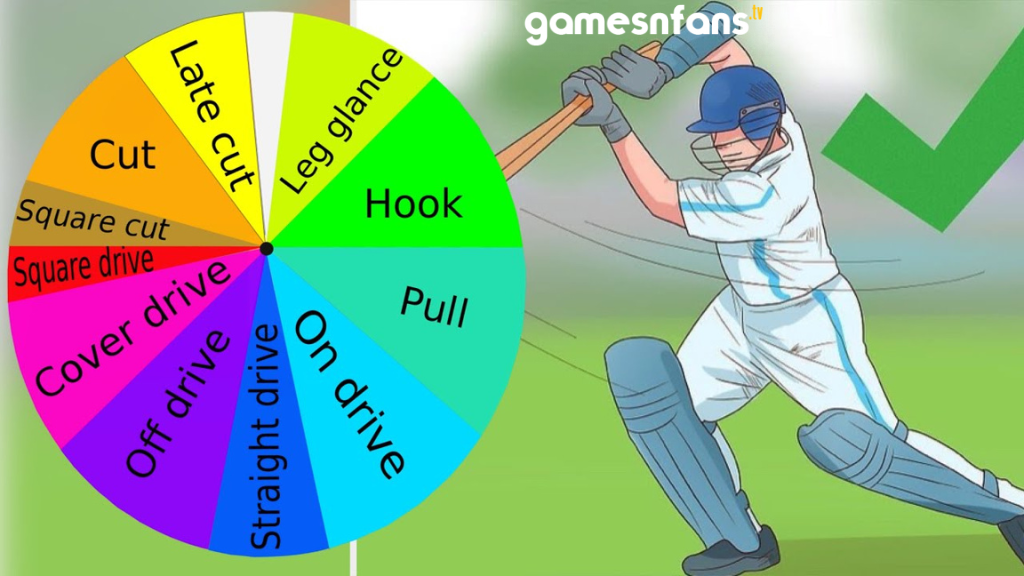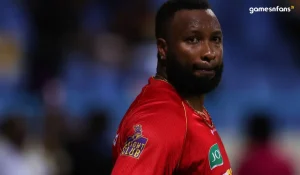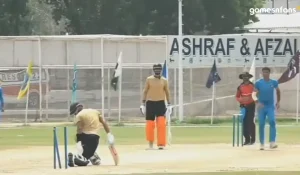Mastering the Art of Cricket Batting Shots
10 min read
Cricket is a sport that perfectly combines athleticism, strength, and precision. Playing cricket casually on a pitch or in a gully is very different from using good cricketing technique when playing the game professionally. Without the proper cricket batting skills, we are nothing more than professional bowlers’ bait.
The sport of cricket provides batters with a variety of strokes and batting strategies they may use to rack up plenty of runs and win the match. Even after witnessing that a million times, we are aware that you stumble when attempting to play those cover drives as gracefully as Kohli does. We’ve got you covered, so don’t worry.
We will fully satisfy your curiosity with a complete instruction that will delight you, whether you want to play the delicate cover drives or strike those helicopters.
So grab your bat and get ready to discover the techniques for perfecting cricket strokes.
1. The Defensive Shots:
No matter how fast-paced and big-hitting the game of cricket becomes, the basics will still remain the same. Great cricketers build their basics strong and even in the era of hard-hitting they focus on techniques that are the reason behind their success.
Cricket is a game of patience and resilience, requiring batsmen to defend skillfully against the opponent’s deliveries.
The following are some commonly used defensive shots:
Forward Defense:
One of the most fundamental defence shots of cricket is used to block the incoming good-length or full-length delivery.
In this stroke, the batsman advances towards the ball while maintaining a straight grip on the bat in order to block the ball with soft hands. This shot minimises the chance of escaping and provides a strong defence.
Back Foot Defense:
The batter shifts his weight to his back foot and keeps his body balanced. Now as the ball short of a good length moves forward he gently pushes the ball with a straight bat.
The backfoot defence is employed when the ball is pitched short of a good length. Batsmen transfer their weight to the backfoot, align their bodies correctly, and use a straight bat to defend the ball.
Block:
The block is similar to forward defence, it involves placing the bat of the batsman perpendicular to the ground with a straight head and eyes on the ball. Let the ball hit the bat and not the bat hit the ball.
It is commonly used to defend against deliveries that are too close to the body.
Leave:
Sometimes, you need to show respect to good balls by leaving them. The best defensive option is to not play a shot at all.
But a Batsman can only choose to leave the ball when it is outside the off-stump or when they judge that playing a shot would be too risky.
2. The Attacking Shots:
The batsman needs to put pressure on the opponents and what suitable method of scaring the bowling side be except playing attacking shots.
Here is the list of attacking shots that you can use in your next game:
Straight Drive:
A straight drive is one of the most classic and elegant shots played in cricket.
When the bowler bowls an overpitched delivery, it gives the freedom to the batsman to move his front foot in the line of the delivery and drive the ball with the straight bat towards the bowler’s end or mid-off region.
Read More: Cricket 24 : Everything You Need to Know
Batsman must ensure that his/her focus is fully concentrated on the incoming ball and with the best timing he can give goosebumps to the audience by playing this classic shot.
Cover Drive:
The cover drive is a beautiful shot played on the front foot. Similar to straight drive, batsmen extend their front foot and drive the ball elegantly through the covers, showcasing impeccable timing and placement.
Square Drive:
Square drive is played when the ball is slightly overpitched and bowled way wider from the off-stump.
Batsman brings his front foot towards the line of the ball, opening the face of the bat a little and striking the ball down the ground towards the off-side, behind point, or in the square side region.
Perfect hand-eye coordination is a must to play this shot with precision and timing.
On Drive:
An overpitched delivery when bowled toward the leg stump provides the perfect opportunity for the batsman to play this shot.
In order to execute a successful on-drive, it is crucial to have an excellent balance at the crease. If the batsman’s head is tilting toward the offside, he/she will encounter significant challenges in shifting his weight back effectively.
The on-drive is executed by playing the ball toward the leg side with a straight bat. Batsmen need to time the shot well to avoid any risks and ensure the ball travels along the ground.
Leg Glance:
Leg glance is a comparatively easy shot that is used to punish the bowler for his wrong line of bowling.
When the ball is bowled towards the leg side batsman uses the pace of the ball and delicately guides the ball fine down the leg side by opening the face of the bat. Batsmen use their wrists to control the shot and direct the ball past the fielders.
Flick:
The perfect blend of power and wrist work, the flick is an awe-inspiring and visually stunning shot to watch. Typically, a flick shot is employed when facing a straight, full-length delivery or a ball pitched on the middle and leg stump.
It appears that the batsman is going to play the shot with a straight bat but at the time of contact he uses his wrist and strong bottom hand to guide the ball with power through the mid-wicket.
A well-executed flick shot can be an effective way to score runs and manipulate the field placements set by the opposing team.
Cut:
The cut shot is employed to play a short-pitched ball outside the off-stump towards the point or cover region by slicing the ball with power and precision.
It requires excellent hand-eye coordination and precise timing.
Square Cut:
A square cut is a cross-batted stroke used to place the ball square of the wicket or slightly rearward of point and is played off the back foot. The ideal delivery for a square cut is a short pitched ball that travels wide of the off stump and permits unrestricted arm movement.
Late Cut:
When the ball is struck towards the third man position and passes the batter’s body, a late cut is made while the ball is being hit. When facing slower bowling, the cut stroke is normally played off the back foot, although it can also be played sometimes off the front foot.
Pull:
The pull shot is executed against a short-pitched delivery, played with a horizontal bat to send the ball forcefully toward the leg side. Timing and footwork are crucial for its success.
Hook:
Bouncers have always been one of the lethal deliveries for the batsman.
In order to counter a bouncer hook shot was invented.
The hook shot is played to counter a bouncer. Batsmen pivot on the back foot bringing the centre of mass on the backfoot leg and swing the bat horizontally like a slap given to the ball to hit it towards the leg side.
Sweep:
Named after the way sweepers clean the surface with a broom or stick, the sweep shot is used primarily against spinners.
Earlier only overpitched leg deliveries were the desired kind of delivery for a sweep but nowadays as the bats are getting thicker and stronger, batsmen can even send an offside ball towards the leg side with a sweep shot.
Batsmen crouch low and use a sweeping motion to hit the ball from outside the off-stump toward the leg side.
Reverse Sweep:
The game has evolved so much that sometimes batsmen get tired of playing from their dominant side and try to experiment a little with playing from the other side to surprise the bowler.
Jokes aside, the reverse sweep is an unorthodox shot where batsmen switch their hands on the bat handle to play a sweep shot in the opposite direction, targeting the off-side.
Read More: A Complete Overview of T20 Cricket
It is often used to surprise the fielding side. Some advanced anticipation of where the bowler is going to ball is needed to execute this shot with precision and correct timing.
3. The Unorthodox Shots:
Cricket has witnessed the emergence of innovative and unorthodox shots that challenge traditional cricket batting techniques.
Here are a few notable ones:
Switch Hit:
What can be a better way to deceive a bowler’s tactics than by just changing our own traditional way to bat?
The switch hit is a highly advanced shot where the batsman changes their stance from right-handed to left-handed (or vice versa) just before the ball is delivered. This allows the batsman to exploit fielding placements and score runs in unconventional areas.
Dilscoop:
Popularly known as “pallu shot” in India, Dilscoop was first invented by Sri Lanka’s star Batsman Tilakaratne Dilshan.
A completely abnormal shot in which the batsman uses his footwork and moves across the crease towards the off stump and sits down on his knees and scoops the ball back towards the boundary right behind the wicketkeeper.
Helicopter Shot:
Who can forget the last shot Dhoni played in the 2011 world cup?
The trademark of Mahendra Singh Dhoni’s helicopter shot has been a phenomenal shot in the armoury of batsmen. It is played with a strong bottom-hand grip. It involves generating immense power and hitting the ball toward the leg side, similar to a pull shot.
Uppercut
An upper cut is a shot directed at third man that is typically made when the ball is delivered with an extra bounce outside the off stump. It is a risky shot that, if not done well, might slip or edge the ball to the custodian. In contemporary cricket, the shot is often used.
Ramp Shot
A ramp shot is a stroke made by a batsman in which they flick their wrists to elevate the ball above the wicket keeper’s head or the slips. The stroke entails going across the stumps and guiding the ball over the fielders utilising the bowler’s speed.
4. The Lofted Shots:
Lofted shots are employed to hit the ball in the air over the infield, aiming for boundaries.
They are somewhat risky and should be played with utmost care.
Here are some common lofted shots:
Lofted Drive:
Similar to the drive shot, the lofted drive is executed by hitting the ball in the air with a vertical bat, driving it over the infield and into the boundary. Timing and placement are crucial for success.
Lofted Cover Drive:
Similar to the lofted drive, the lofted cover drive involves hitting the ball over the cover fielders.
Read More: ODI World Cup 2023 Schedule: Excitement Builds as ICC Reveals Fixtures
Opening batsmen usually take the risk of playing this shot, in order to gain the advantage of the powerplay restrictions. It requires excellent timing and an extended follow-through to generate power.
Lofted Square Drive:
Rohit Sharma and Shikhar Dhawan totally deteriorated all bowling sides with their precise slicing of the ball to get a four over the square.
The lofted square drive involves hitting the ball with a lofted shot toward the square region on the off-side. It demands precise timing and proper footwork.
Lofted On Drive:
Similar to the on drive, the lofted on the drive is played by lofting the ball towards the leg side, between the mid-on and midwicket fielders.
Lofted Leg Glance:
Similar to leg glance, the lofted leg glance involves lofting the ball delicately over the fielders on the leg side. Batsmen use their wrists to guide the ball in the desired direction.
Lofted Flick:
India’s star Batsman Surya Kumar Yadav comes to mind whenever we think of this shot. A bowler strategizing his best as to where he should place the fielder in order to tackle him down, all futile when SKY sends his off-stump delivery to the sky, with his lofted flick, a treat to watch.
Lofted Cut:
The lofted cut shot involves hitting the ball in the air over the infield on the off-side. Batsmen use their wrists and bat speed to generate power while maintaining control.
Lofted Pull:
The lofted pull shot is played by lofting a short-pitched delivery toward the leg side. It demands quick reflexes, footwork, and a well-timed swing of the bat.
Lofted Hook:
Similar to the lofted pull shot, the lofted hook shot is employed to hit a bouncer over the infield toward the leg side. It requires exceptional timing and coordination.
Lofted Sweep:
The lofted sweep shot is an attacking variation of the conventional sweep shot. Batsmen play the ball in the air, targeting the leg-side boundary, using their wrist power and timing.
Lofted Reverse Sweep:
When we combine the unorthodox shot of reverse sweep with the execution of a Lofted Shots the result we get is a lofter reverse sweep shot. The shot is aimed towards hitting the ball over the thirty yard circle on the off-side.
Conclusion:
Educating oneself on hitting strokes is insufficient. A skill is required for an effective performance, and skill cannot be gained without practise.
We may talk about the tactics all day long, but unless we start using them, nothing will change.
The 10000-hour rule also applies in this situation. You should move forward in the ground and begin hitting those balls to boundaries with appropriate techniques. It’s not a game you can master in a single day, so have patience and keep practising until you do. So without further ado, return to the field and begin honing your vast arsenal of cricketing strokes and tactics.







